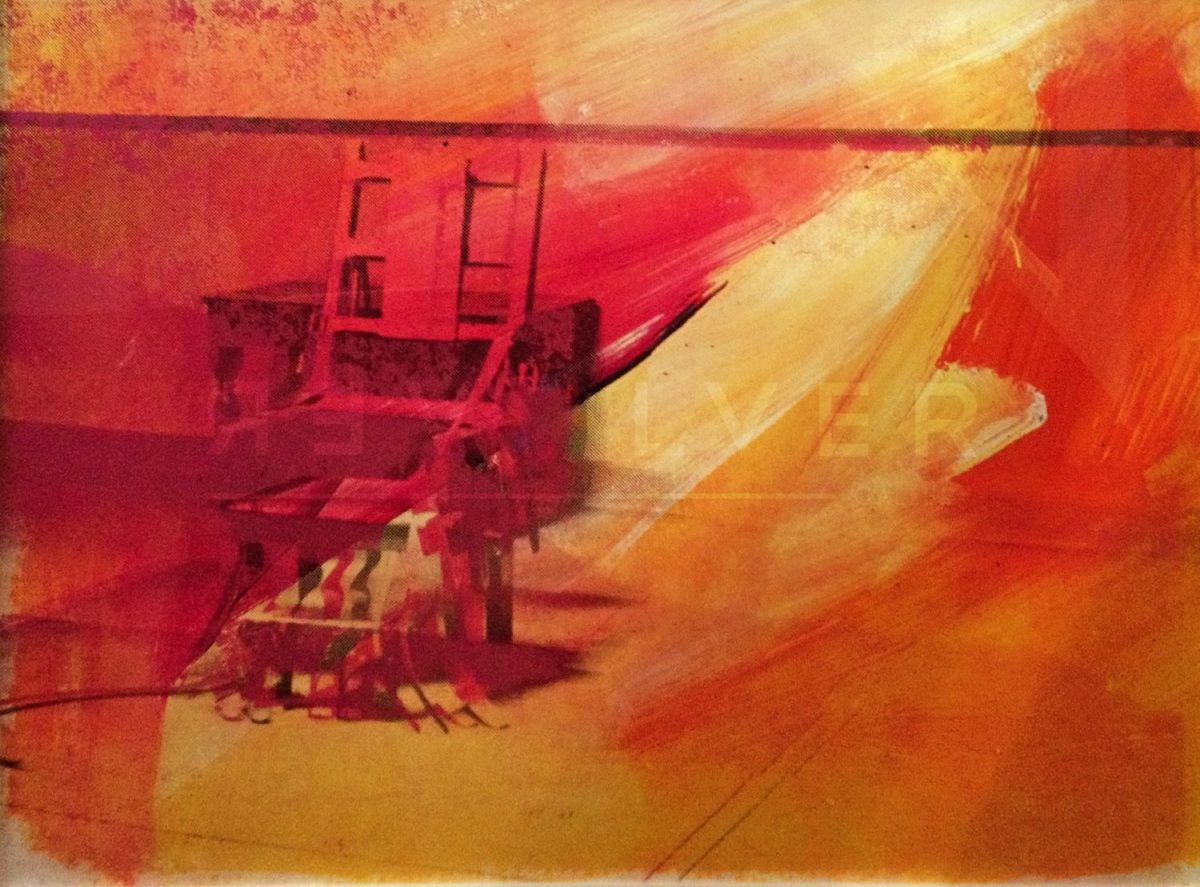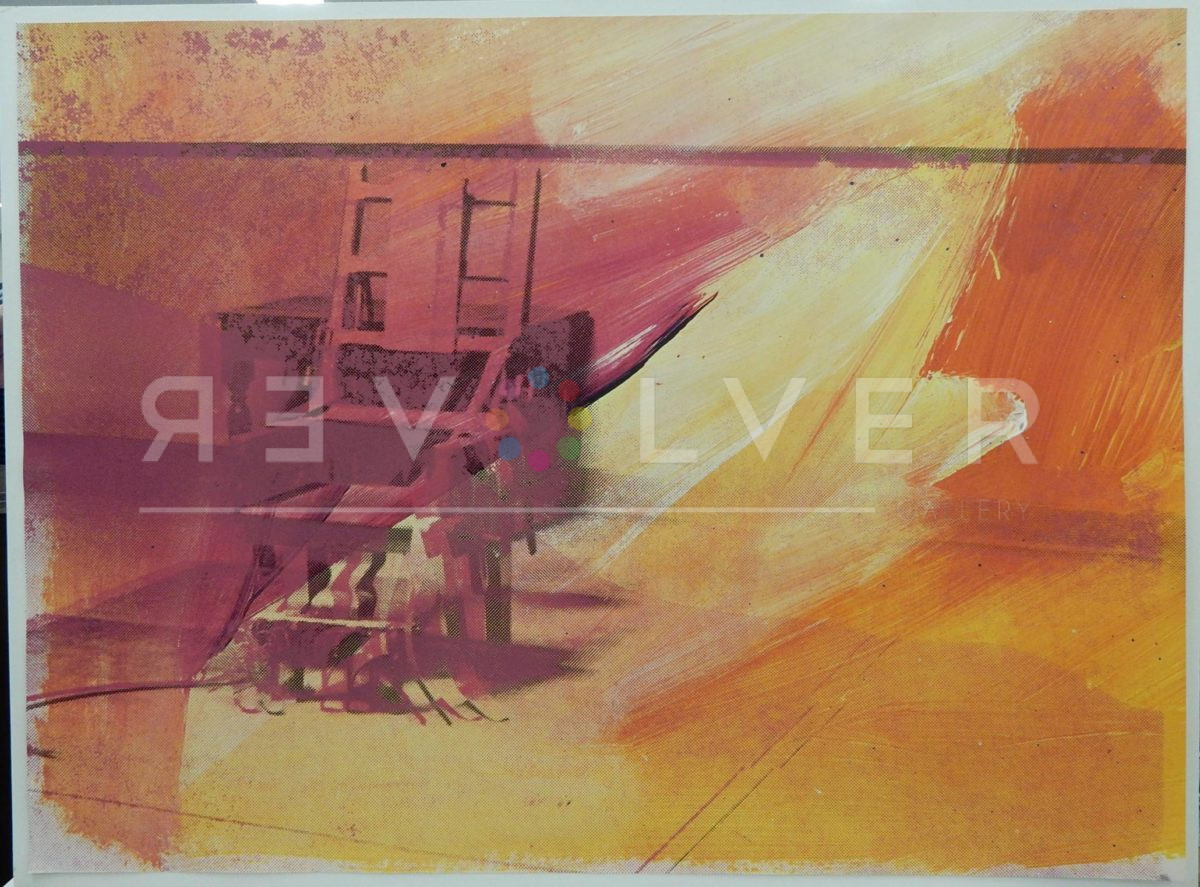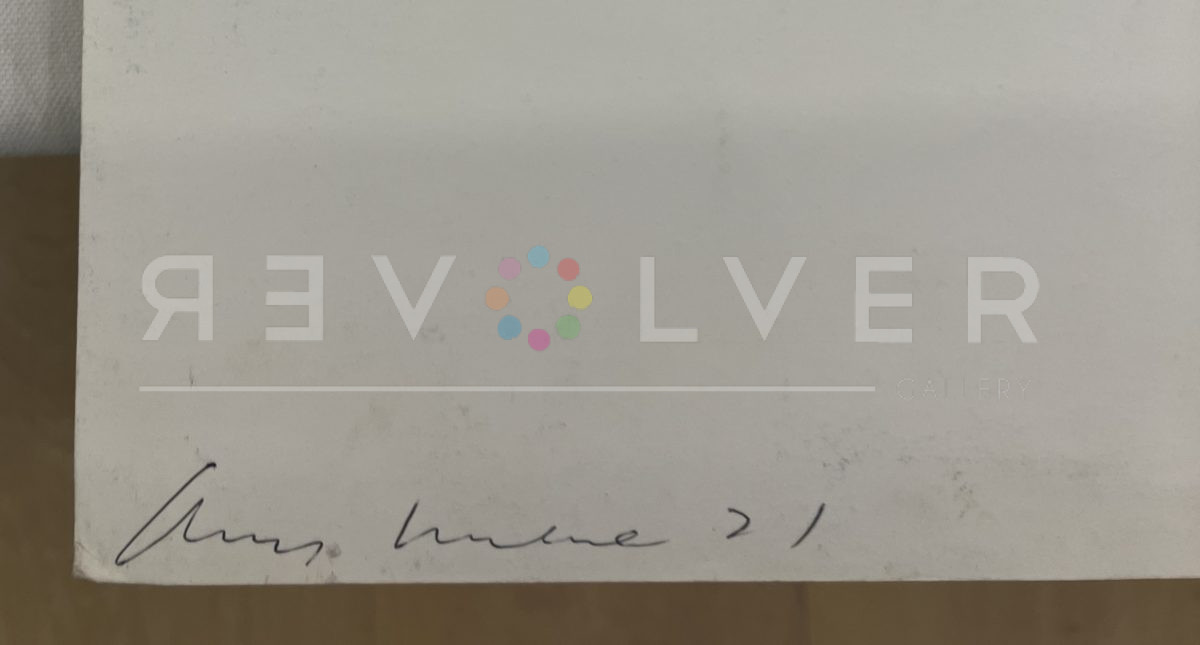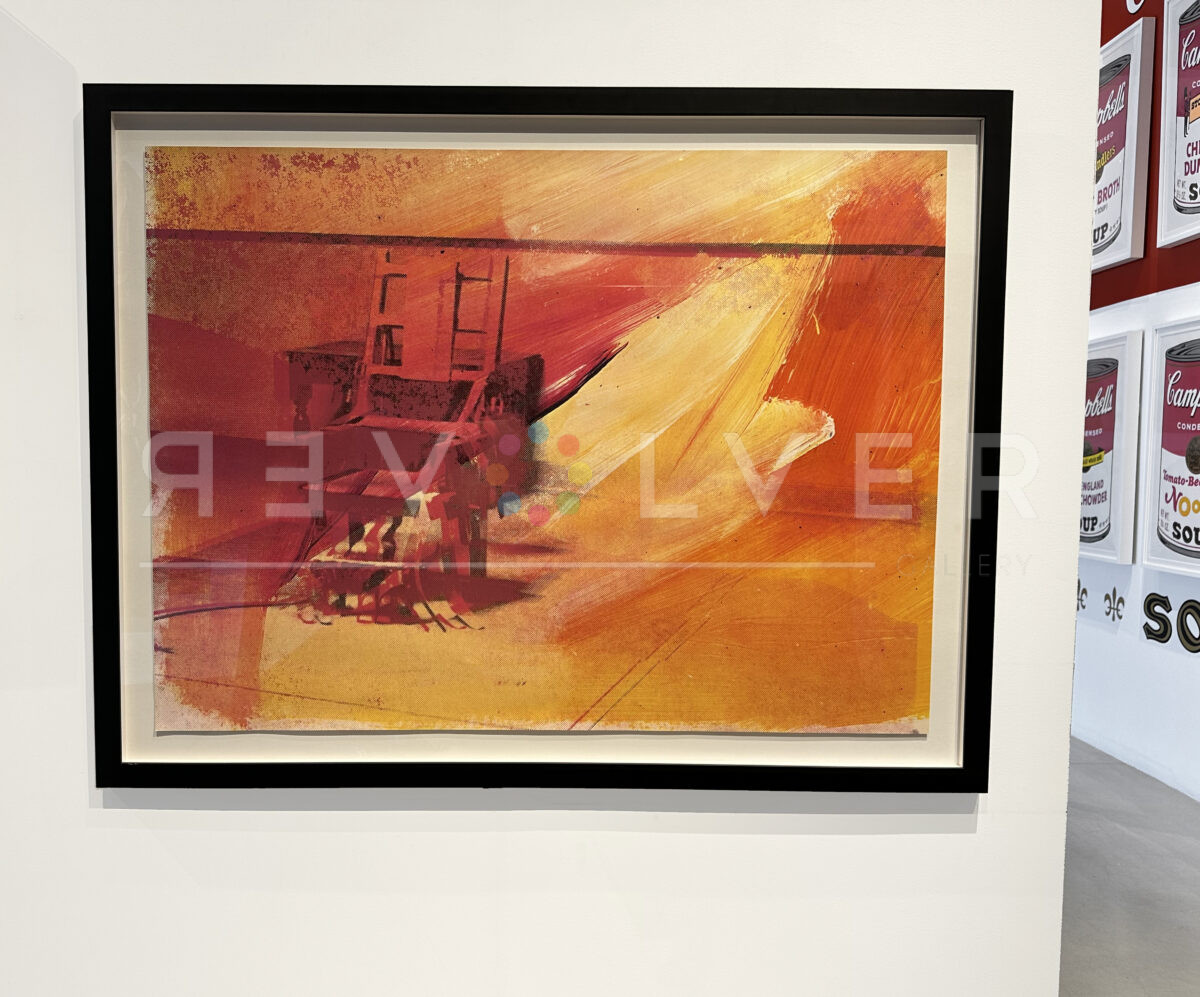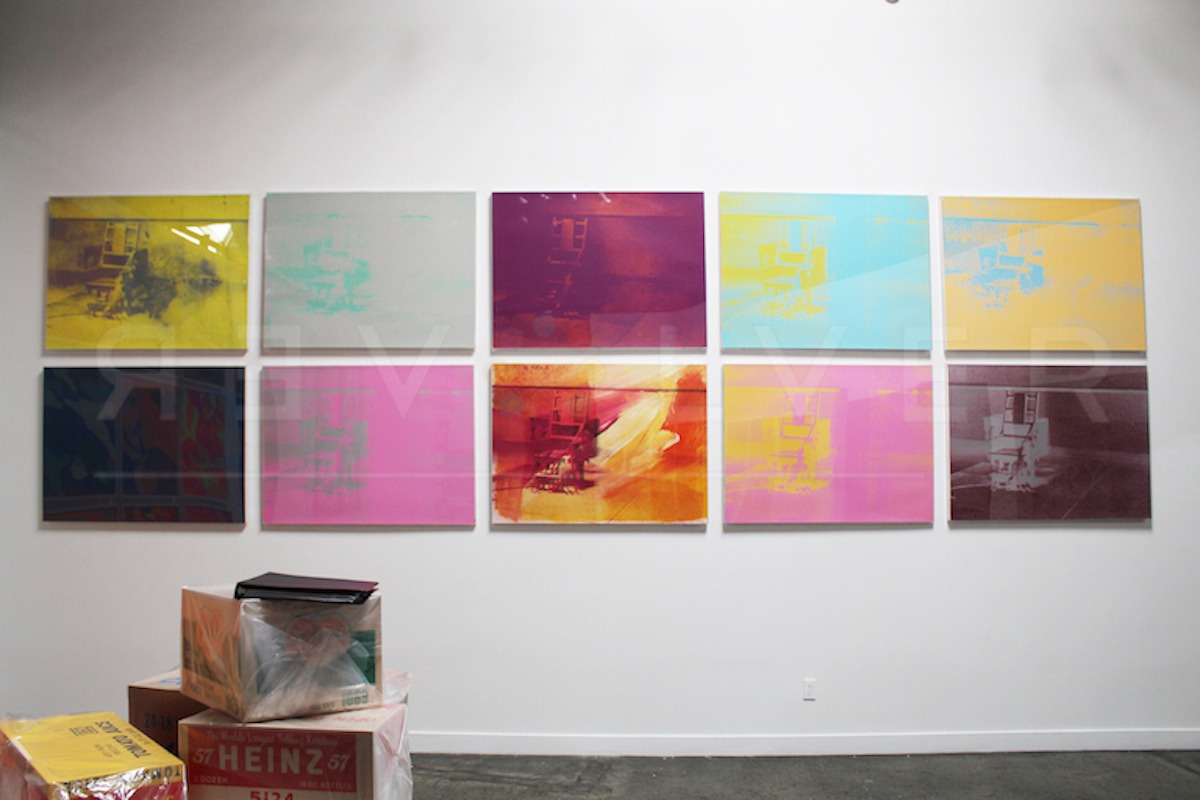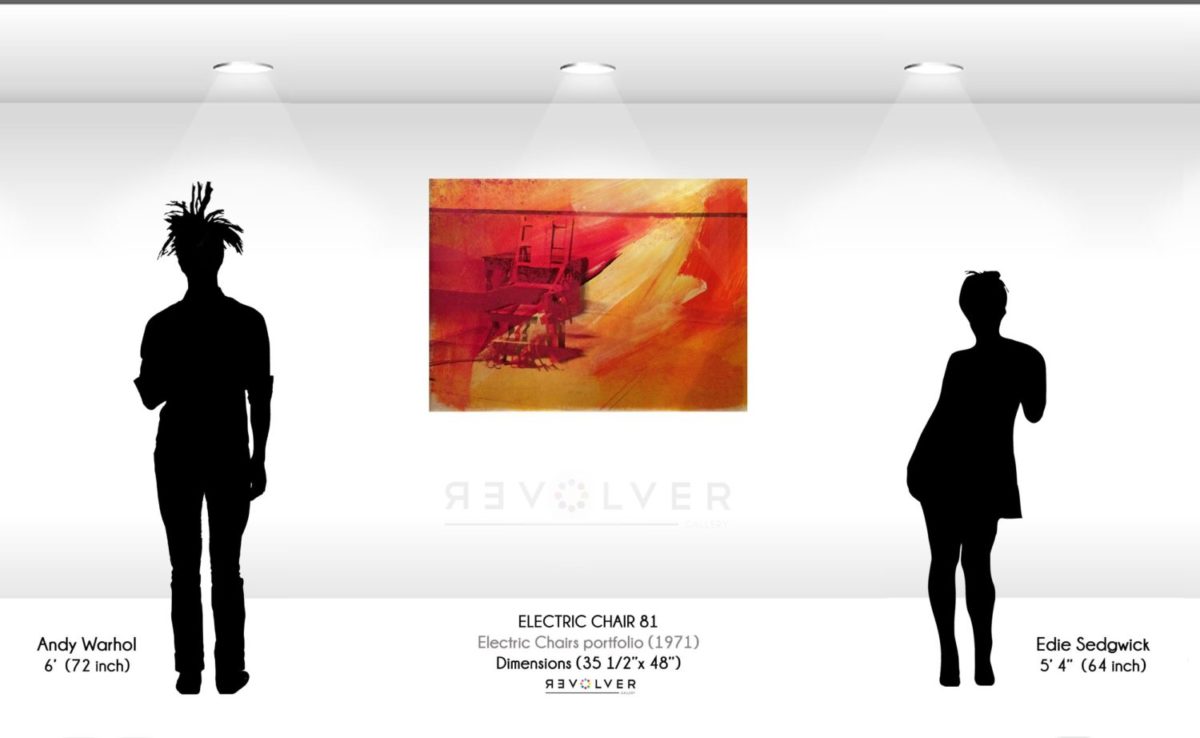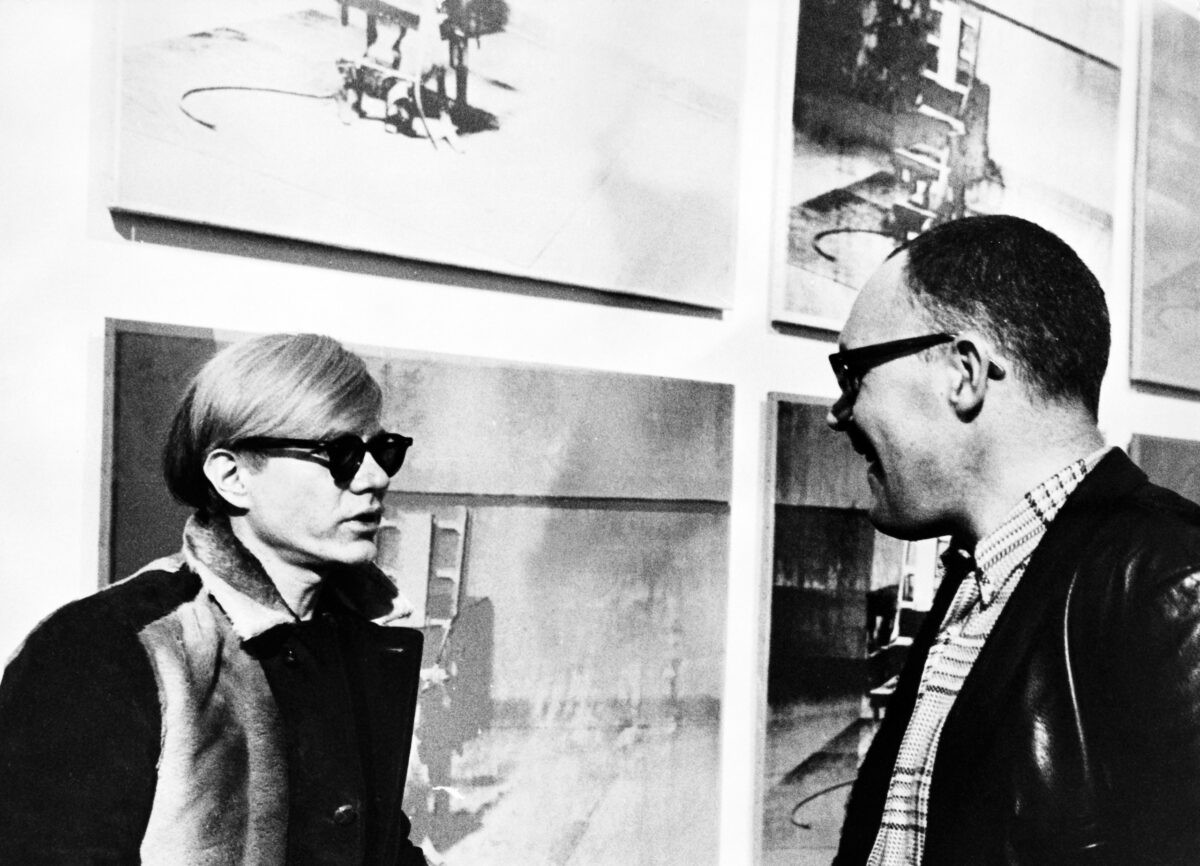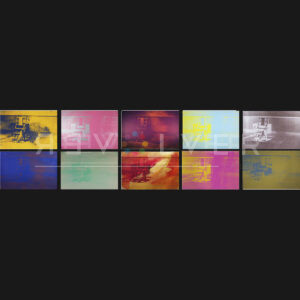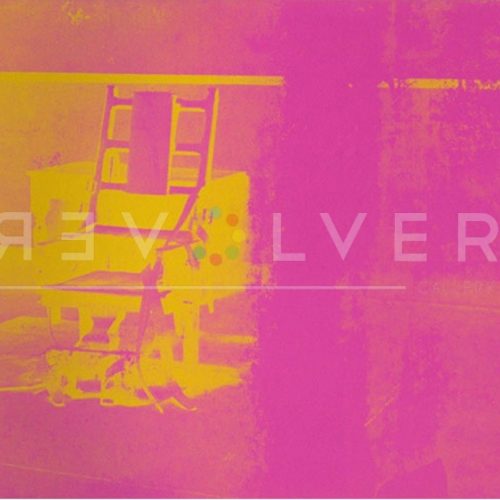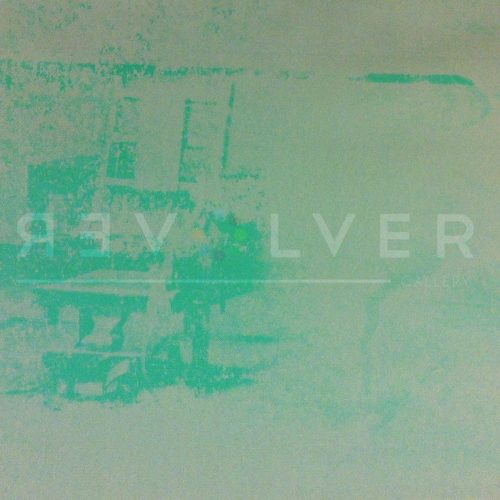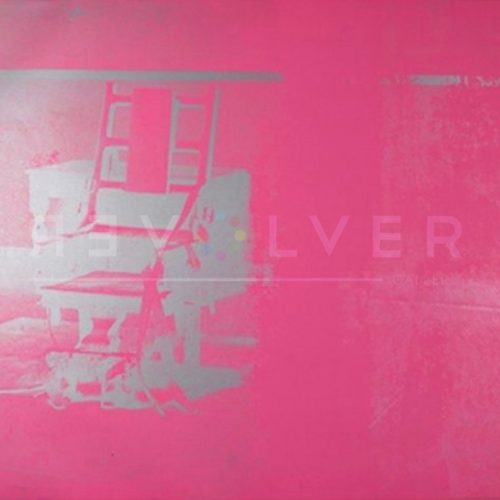Electric Chair 81 is a screenprint by Andy Warhol from his 1971 Electric Chair portfolio, which is an extension of his Death and Disaster series. The portfolio features ten prints that are more abstracted versions of his 1964-65 electric chairs. The Death and Disaster series, started in 1963, remains the apotheosis of controversy in Warhol’s output. Not only did galleries reject the electric chairs, but their presence in Warhol’s canon is often neglected by mainstream audiences. Nonetheless, Electric Chair is amongst Warhol’s top 10 highest-selling portfolios of all time.
Electric Chair 81, with its vibrant, almost manic coloration, is an especially powerful print from the series. The illustration of the chair amidst the maddening flare of reddish brush strokes turns the spectacle of death into a dusky sky. The repeated overlay of the bottom portion of the chair further demonstrates the absurdity of the scene. The first 1964 painting of the Electric Chair shows a wider angle of the absent room, lending an eerie presence to the chair. However, in the later versions, Warhol gives even more presence to the chair by focusing directly on the powerful subject.
The idea to focus on death came from the desensitizing coverage of violence in the media. In June 1962, art curator Henry Geldzahler showed Warhol a newspaper headline that read ‘129 DIE IN JET’. Warhol recalled his inspiration for the Death and Disaster project in a 1963 interview: “I guess it was the big plane crash picture, the front page of the newspaper: 129 Die. I was also painting the Marilyns… I realized that everything I was doing must have been Death. It was Christmas or Labor Day—a holiday—and every time you turned on the radio they said something like ‘4 million are going to die.’ That started it. But when you see a gruesome picture over and over again, it really doesn’t have any effect.”
By lending optics to capital punishment, Warhol concentrates his audiences’ gaze (generated by his previous, often playful works) onto a scene that is, by design, invisible to most citizens. The incomprehension of mechanized death becomes imaginable in Warhol’s representation of the electric chair. The usual onslaught of death imagery in the media is always depersonalized, rigid, and often dismissive of the victims’ plights. A crime scene rationalizes tragedy. However, Electric Chair 81 abstracts the cold room by introducing swatches of red and orange, and with it, a new sort of (Pop?) shock.
In some other Death and Disaster works, such as Car Crash Disaster and Ambulance Disaster, death is on full display. In Electric Chair, however, the concept of death is comparably more suggestive. There exists a haunting element to the print; the wispy brush strokes resemble the mayhem of ghosts, giving off a visceral and violent air. It even calls to mind Warhol’s 1986 Self-Portrait, released one year before his death.
The Electric Chair series confronts the viewer with a death crisis. It is the inevitable threat of death being depersonalized; lacking significance even in tragic accounts in the media. Execution by the electric chair is as much a standardized occurrence as drinking a Coca-Cola–both deliver an unchanging, modernized sensation. The commodification of death is the most stark subject matter in Warhol’s oeuvre, and continues to create politically charged dialogue.

